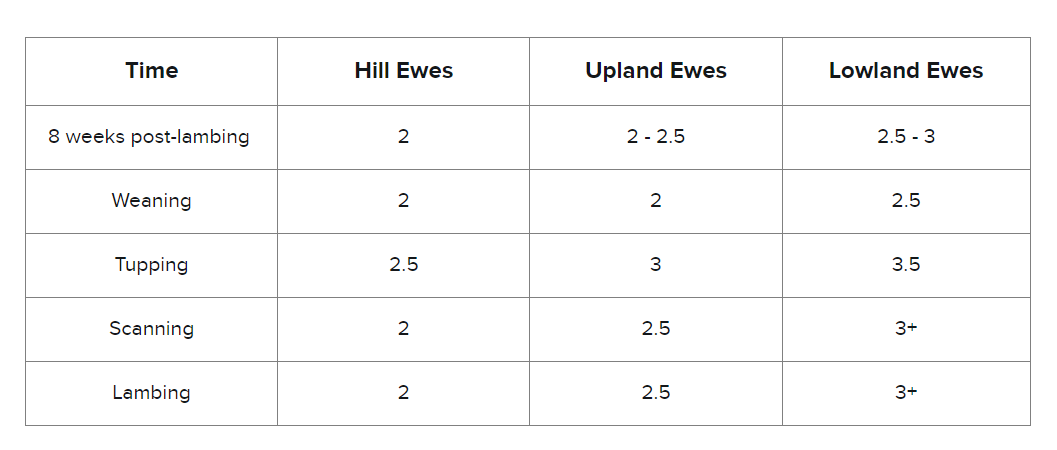Beef and Sheep manager, Bryn Hughes advises farmers to make informed adjustments to their ewe management practices for greater success during the lambing season.
Good summer and autumn grass growth has led to high scanning percentages, with the majority of ewes carrying twins or triplets.
However, despite the grazing season being extended this autumn, the nutritional value of grass will be declining, therefore relying on grass to maintain ewe’s body condition score (BCS) isn't likely to be an option.
A change from previous results
High scanning percentages are a welcomed change from last year’s results, however, this means that the management of ewes needs to be reviewed. Last year, farmers could get away with feeding a little less, but as figures show that ewes are, in general, carrying more lambs this year, flock management needs to be reviewed.
All ewes should be body condition scored (BCS) at scanning. There is then a month’s window to alter the BCS and ensure ewes are in optimal health to prevent problems at lambing and during gestation. more about problems
Lowland ewes should be lambing at a BCS of around 3.5 and hill ewes between 2.5 and 3:

The importance of body condition scoring
Body condition scoring (BCS) in ewes is a critical management tool that allows farmers to assess the nutritional status of their flock. It involves visually and physically evaluating the amount of body fat and muscle on a ewe. The scoring system typically ranges from 1 to 5 or 1 to 9, with higher scores indicating better body condition.
It not only provides insights into the current nutritional status of the flock but also guides strategic decisions that can positively impact reproductive success, lamb survival, overall health, and resource utilization. Regular monitoring and adjustment based on BCS contribute to the long-term sustainability and profitability of a sheep farming operation.
Read more on how to properly carry out BCS in ewes here.
70% of a lamb’s birthweight is put on in the last six weeks of pregancy, as lambing approaches, an ewe’s feed requirement almost doubles. As more ewes are carrying twins and triplets, additional feed will further need to be fed to ensure they receive the correct nutrition to maximise colostrum and rear healthy lambs.
Supplementary feeds
Farmers can choose from 3 main supplementary feeds, depending on the quality of forage. The first being to put ewes on roots, the second to give high energy lick buckets or blocks, and the third to feed compound feeds like cake.
Good quality supplements will help increase protein and energy in the ration, to make up for reduced quality forage throughout winter. For compound feeds, you should be aiming for around 12.5 MJ/kg of dry matter to meet the increasing demands of an ewe in late pregnancy.
The Wynnstay compound feeds are all formulated to provide the correct levels of protein and energy to set ewes up for the lambing period.
Reaching and maintaining the optimal body condition score for ewes at lambing will ultimately result in better colostrum quality, increased milkiness, and better survivability.












